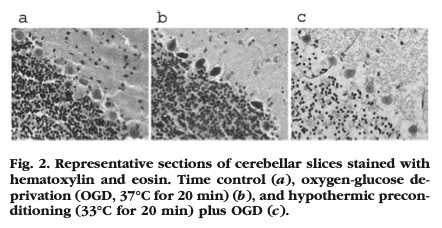Hypothermia in animal models of acute ischaemic stroke: a systematic review and meta-analysis
H. Bartvander Worp, Emily S. Sena, Geoffrey A. Donnan, David W. Howells and Malcolm R. Macleod
Brain, 2007
Animal studies of induced hypothermia in focal cerebral ischaemia have tested cooling throughout a wide range of target temperatures, durations and intervals between stroke onset and the initiation of hypothermia.Data from 3353 animals show hypothermia reduced infarct size by 44%. In animal models of focal cerebral ischaemia, hypothermia improves outcome by about one-third.

